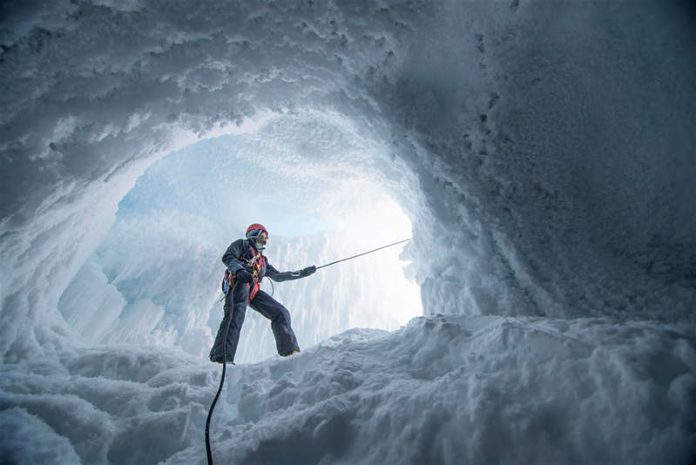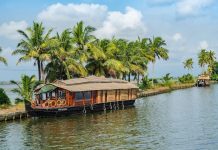Any time spent in Antarctica, one of the planet’s most extreme and inhospitable places, inevitably involves an adventure.
Antarctic travel has epitomised adventure for more than a century. For most of this time, the only way to experience it was to go with a government scientific programme or a hugely expensive private expedition. Fifty thousand tourists a year now visit, mostly sightseeing and wildlife watching, but it’s still the one continent where you can’t just take a cheap flight, turn up and do your own thing. Unless you skipper your own yacht to the ice, everyone has to rely on a commercial operator to provide the logistics – either just the basics for hardcore exploration, or fully pampered glamping on ice. In between those extremes are two traditional means of polar travel – skiing and kayaking.
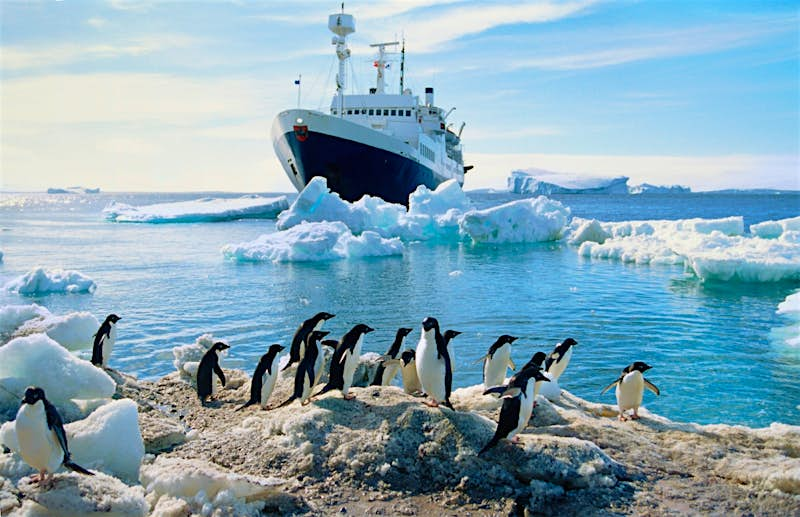
Far from the flat, monochrome void of the deep interior, the Antarctic Peninsula is beautiful and richly diverse. A melding of sea, snow and rock, enriched with wildlife and stories of human endeavour, it’s no wonder most visitors consider it the trip of a lifetime. Weather governs everything here, but even with inevitable delays, most trips get plenty of time for active adventure. Ships and yachts visit constantly from November through late-March, but sea-ice conditions vary greatly year to year, and this affects access to some locations. Skiing and climbing are best done in November and December, while January to February is better for kayaking and whale sightings.
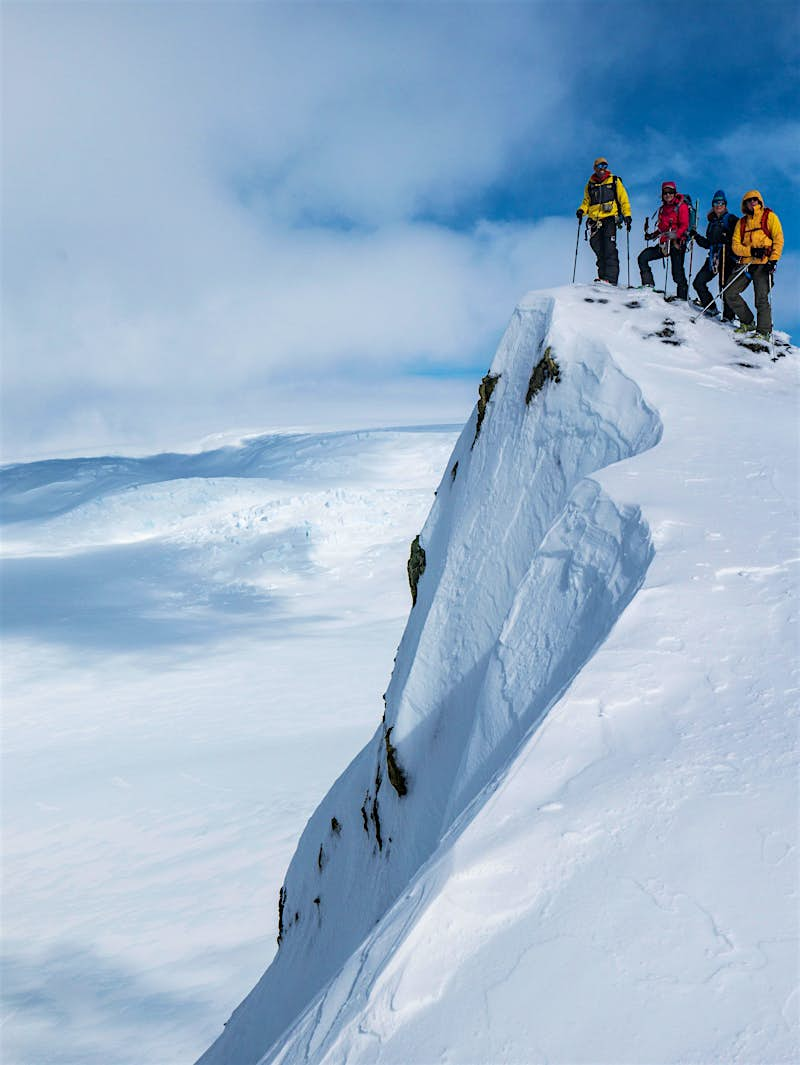
Skiing & climbing
The Antarctic Peninsula is basically one long mountain range dropping straight into the sea, flanked by equally steep islands poking out of the stormy straits and bays. Some of the larger islands have giant peaks – such as Mt Français (2822m) on Anvers Island and Mt Parry (2520m) on Brabant Island, which are both popular climbing and skiing areas – while dozens of lower islands and promontories provide easier days out.
Though barely any snow falls in the icy Antarctic interior, the maritime environment of the peninsula coast means softer, skiable snow on the mountain slopes. The skiing here is backcountry style. There are crevasses and the possibility of avalanches, but all outings are with well-qualified guides and even skiers without huge experience can end up carving turns with an iceberg-strewn ocean as a backdrop.
Several established companies offer cruises with ski and mountaineering opportunities but the only ship-based option fully dedicated to ski adventures is Californian outfit IceAxe Expeditions, which runs regular trips at the start of every season. On most trips you can ski everyday, even in less-than-perfect weather, and you will encounter wildlife along the way, as the Zodiac navigates past seals and puts you ashore among penguins. Nights are spent safely aboard ship in well-catered comfort. A longer, tougher and more expensive option is aboard a yacht such as Icebird, the base for Ski-Antarctica, a company that has made numerous first ascents, descents and ski journeys on the coastal peaks and hinterland.
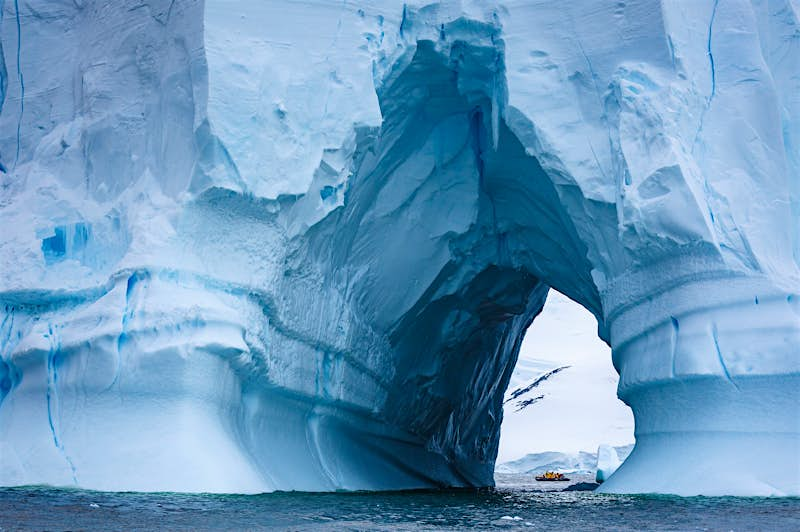
For those seeking to explore deeper into the big white void, Antarctic Logistics & Expeditions, incorporating the inland-Antarctic pioneers Adventure Network International (ANI), offers two-week Ski Antarctica or Climb Antarctica programmes. These are separate to its long-standing operation on Mt Vinson (4892m), the continent’s highest peak, and magnet for Seven Summiteers. Starting out of ALE’s impressive Union Glacier camp, these trips offer the opportunity to make first ascents of lower peaks or take long, exploratory ski tours through the Heritage Range, a network of elegant low mountains with sweeping spurs and craggy ridges. Here, the weather is usually better but colder than on the Peninsula. After a four-hour flight from Punta Arenas, Chile, visitors spend some time at Union Glacier acclimatising and preparing for their adventure, before heading out with experienced guides on multiday adventures. For the climbing programmes, basic alpine experience at least is needed to make the most of the trip.
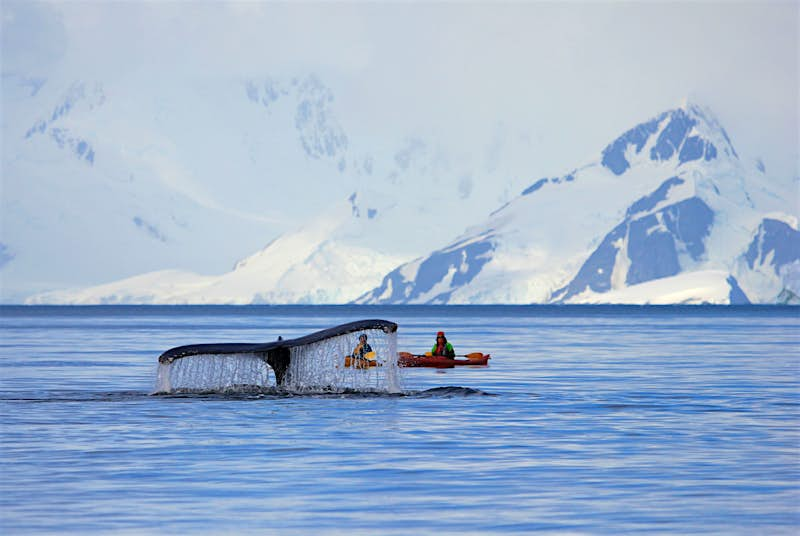
Sea Kayaking
Now the most popular adventure activity conducted by operators on the peninsula, kayaking offers visitors a way to fully immerse themselves in the landscape. Unlike planes and ships, a kayak brings you back to the pace of the place, in tune with the waves and the wind, powered only by yourself as you glide past icebergs to explore popular sites such as Neko Harbour, Cuverville Island and Cierva Cove, as well as hidden gems inaccessible to larger vessels. There’s something intimate about moving around this blue world, plugged into to the fluid polar environment around you, spotting whales while penguins zoom underneath your paddle. Sea-kayaking options are available on several cruises as optional additions for an extra cost, but some operators, such as Southern Sea Ventures, run dedicated trips that will aim to paddle every day.
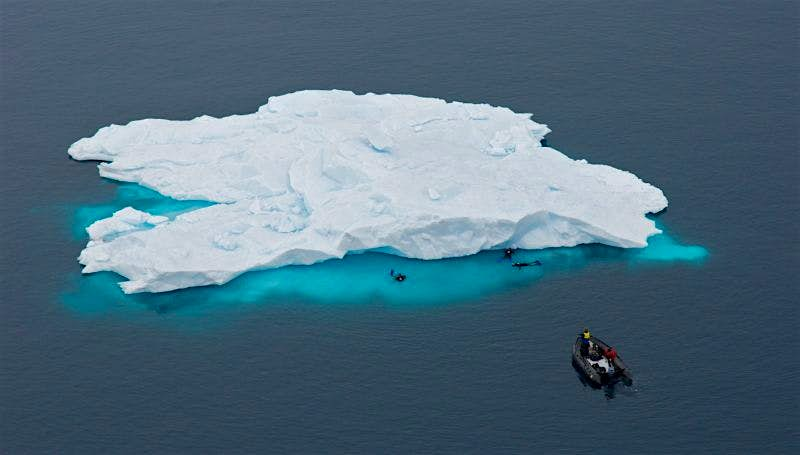
Diving
To enable even more immersion in Antarctica, some operators offer scuba options to certified divers with open-water and drysuit experience. A whole new underworld opens up: ice walls and caverns, historic wrecks, wildlife unseen from above and the truly unique chance to touch the ice from the inside – just watch out for the leopard seals as at least one diver has been drowned by an aggressive seal.

